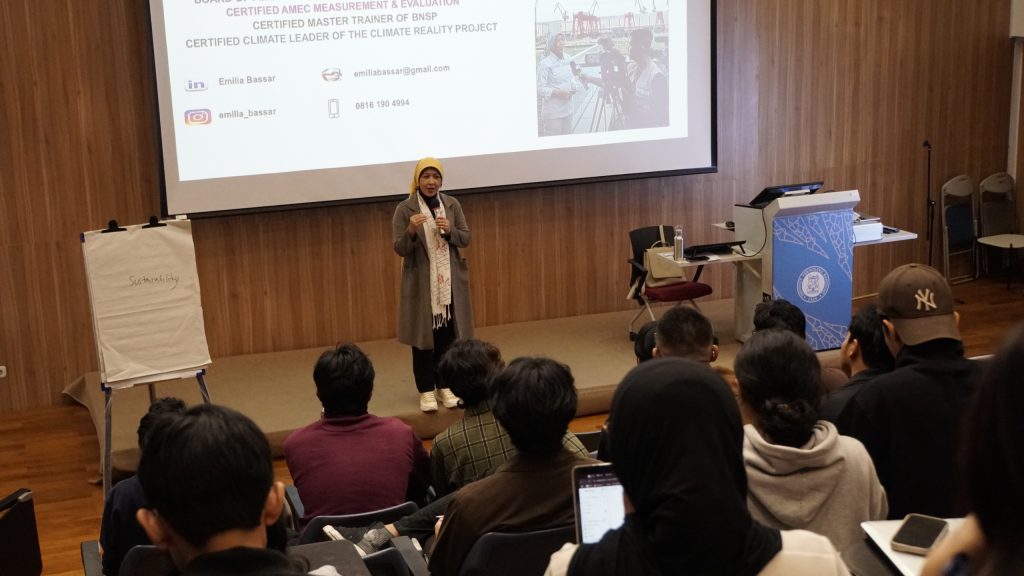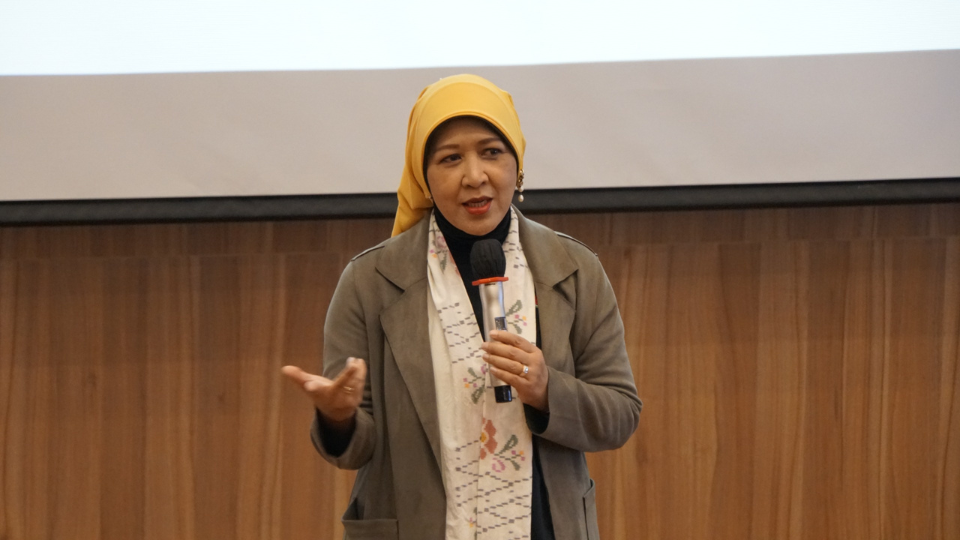In today’s business landscape, industry players must operate sustainably. Beyond profit-making, they must also protect the environment and support the communities surrounding their operations. Achieving this balance requires strong, sustainable leadership.
This was the key message delivered by Dr. Emilia Bassar, M.Sc., IAPR, an expert in communications and public relations, during a guest lecture at the SBM ITB (10/12). Emil is the CEO and Founder of the Center for Public Relations, Outreach, and Communication (CPROCOM), a communications training and consulting firm, and the Director of Communications at the Indonesia Morowali Industrial Park (IMIP).
According to Emil, sustainability is built on three main pillars: environmental, social, and economic. She highlighted IMIP, Southeast Asia’s largest nickel-based industrial complex, as an example of corporate sustainability in action.
To reduce its environmental footprint, IMIP has deployed 130 electric dump trucks to replace fossil-fueled vehicles. It has invested in renewable energy sources, including solar, natural gas, and hydropower plants. These initiatives demonstrate the company’s commitment to environmental sustainability.
On the social front, IMIP runs programs such as waste management education for Bahodopi Village residents. The company also hires 1,000 new Indonesian workers each month, contributing to local job creation and improving the social welfare of residents.
Economically, IMIP plays a crucial role in Indonesia’s development through tax and royalty payments and by increasing the average regional income in Morowali.
Emil underscored the vital role of communication in executing corporate sustainability strategies. Effective messaging across various media platforms highlights the company’s progress and encourages stakeholder support for initiatives that benefit society and the environment.
Collaboration with media organizations, including journalist associations and RRI, further amplifies these efforts. IMIP ensures transparency by structuring its communications through agenda setting, key messages, and data-driven narratives, mitigating the risk of greenwashing accusations.





